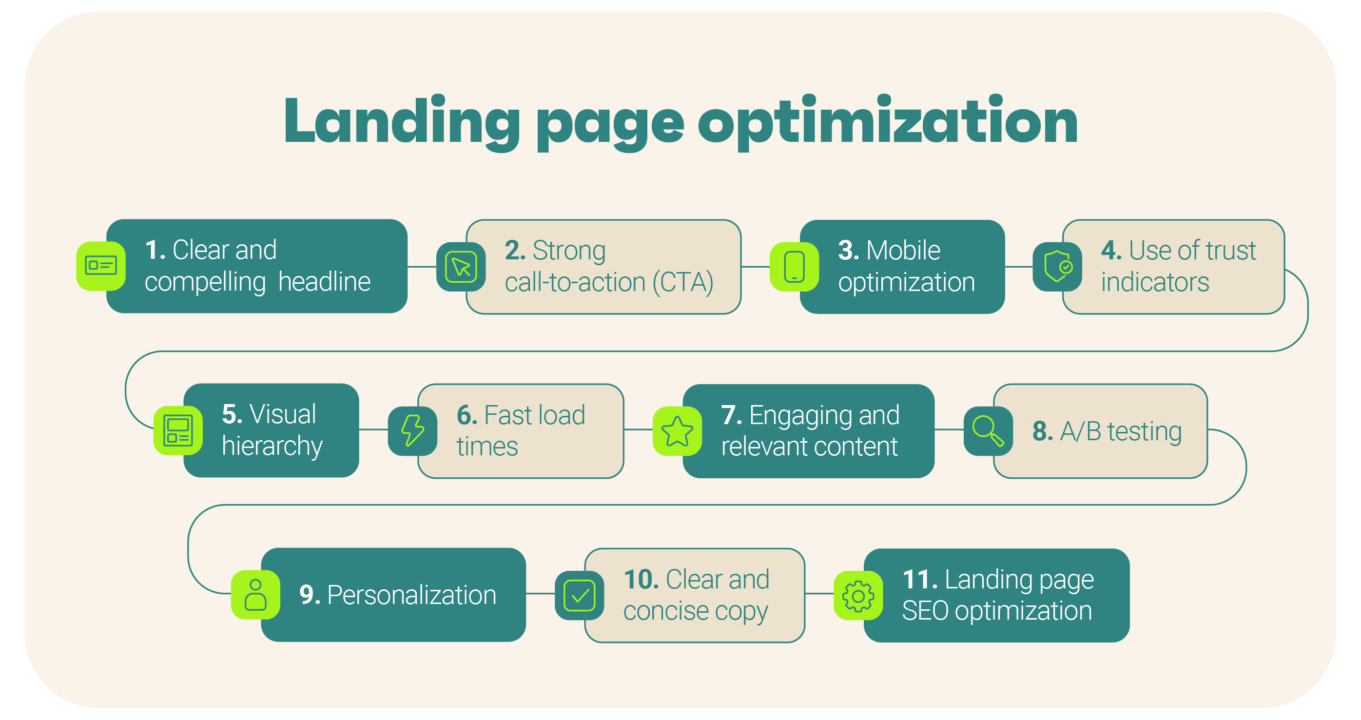18 Proven Tips for Writing SEO-Friendly Content That Ranks Higher
Writing SEO-FREINDLY content is crucial for ranking in search
engines and attracting readers. However, it can be confusing to
know where to start, especially if you’re a beginner.
In this article, we guide you through the process of how to write
SEO-friendly content that not only ranks well in search results but
also resonates with your target audience.
 We’ll cover fundamental SEO techniques from keyword optimization
and on-page SEO writing to advanced tips on technical SEO. With
these SEO best practices, you’ll learn how to write SEO-friendly
blog posts and articles optimized for both readers and search
engines.
We’ll cover fundamental SEO techniques from keyword optimization
and on-page SEO writing to advanced tips on technical SEO. With
these SEO best practices, you’ll learn how to write SEO-friendly
blog posts and articles optimized for both readers and search
engines.
Why Is SEO-Friendly Content Important?
Ranking high in search engine results pages is essential for gaining
the right type of organic traffic to a website. Since SEO writing
focuses on answering the search intent, your content is more likely
to impact and influence readers.
 A well-optimized blog post or web page not only helps a site rank
better but also improves the user experience, encouraging higher
browsing times and engagement rates.
A well-optimized blog post or web page not only helps a site rank
better but also improves the user experience, encouraging higher
browsing times and engagement rates.
18 Tips to Write SEO-Friendly Content.
Writing SEO-friendly content goes beyond simply incorporating the primary keyword in a meta description. Instead, strive to create captivating and informative content that addresses the reader’s specific needs and provides valuable solutions. When crafting a blog post, adhere to these on-page SEO best practices to enhance its search engine visibility and engagement.
1. Conduct Thorough Keyword Research
Effective SEO writing starts with thorough keyword research. This step helps you identify high-traffic keywords and other relevant keywords related to your niche. Use keyword research tools like Google Keyword Planner, Ahrefs, or Semrush to assist you.
Pay attention to keyword volume and difficulty. Target keywords that are specific to your niche but aren’t too challenging to rank for.
For optimal results, don’t just focus on terms with high search volume. Look for keyword suggestions with lower search volume but high relevance to your niche. It’s also helpful to find keyword ideas by browsing competitors’ websites and blogs.
 Let’s say you’re writing a blog post about “indoor gardening.” After using Google Keyword Planner, you discover related keywords like “best indoor plants,” “indoor gardening tips,” and “how to start an indoor garden.”
Consider creating sub-sections in your blog post that specifically address these related keywords. Provide advice on the best plants for indoor conditions, tips for maintaining them, and steps for starting an indoor garden from scratch.
Additionally, it’s beneficial to use Google Trends to identify seasonal trends around your keywords. For instance, “best espresso machines under $200” might experience a peak search volume during the holiday season, which could be an ideal time for affiliate promotions.
Let’s say you’re writing a blog post about “indoor gardening.” After using Google Keyword Planner, you discover related keywords like “best indoor plants,” “indoor gardening tips,” and “how to start an indoor garden.”
Consider creating sub-sections in your blog post that specifically address these related keywords. Provide advice on the best plants for indoor conditions, tips for maintaining them, and steps for starting an indoor garden from scratch.
Additionally, it’s beneficial to use Google Trends to identify seasonal trends around your keywords. For instance, “best espresso machines under $200” might experience a peak search volume during the holiday season, which could be an ideal time for affiliate promotions.
2. Create High-Quality and Valuable Content
Google’s algorithms favor high-quality content that offers genuine value to readers. Your blog posts should be informative, well-researched, and tailored to the specific needs or questions of your audience.
When optimizing content for search engines, the more value you provide, the longer users will stay on your page. This signals to search engines that your content is relevant.
Instead of writing a generic article titled “How to Cook Pasta,” opt for a more specific angle, such as “How to Cook Authentic Italian Pasta: A Step-by-Step Guide from a Rome Chef.” This approach allows you to delve into the cultural history of pasta and the science behind pasta cooking.

3. Strategically Place Keywords
While incorporating your target keyword and related terms in SEO content writing is crucial, avoid keyword stuffing. Strategic and effective keyword placement in the title tag, meta description, headings, alt image tags, and body text enhances your content’s performance during search engine crawls.
For instance, in an article about “sustainable living,” instead of merely mentioning the keyword periodically throughout the text, strategically place it in the title, introduction, subheadings, and conclusion.
 This approach yields a title such as “10 Sustainable Living Tips for Beginners,” accompanied by an introduction that delves into the growing significance of sustainable living.
This approach yields a title such as “10 Sustainable Living Tips for Beginners,” accompanied by an introduction that delves into the growing significance of sustainable living.
4. Craft Engaging Titles and Headings
Compelling titles and headings are paramount in SEO copywriting. They not only capture readers’ attention but also aid search engines in comprehending the subject matter of your blog posts. Incorporate captivating words or numbers, such as “5 Proven Ways…” or “The Ultimate Guide to…”, to entice more clicks and views. Instead of a straightforward title like “Facts About Coffee,” opt for something more engaging like “7 Fascinating Facts About Coffee You Never Knew.” This approach piques readers’ interest and provides a glimpse into the content they can expect. While crafting engaging headings is crucial, remember to incorporate the target keyword to maintain relevance. To further enhance your titles’ effectiveness, conduct A/B tests using tools like Google Optimize to identify the ones that yield higher click-through rates. More clicks often lead to improved rankings and increased opportunities for website conversions.
5. Enhance Readability and Formatting
SEO writing aims to fulfill the search intent. A well-structured article with concise paragraphs, bullet points, and subheadings keeps your audience engaged for longer. Good formatting also aids search engine algorithms in identifying key points, increasing the chances of your content being featured in search results. Additionally, mobile-responsive content enhances the reading experience on smaller screens, optimizing your site for mobile devices.
For instance, let’s consider writing a DIY guide on building a treehouse. Instead of cramming all the material types, steps, and safety tips into dense paragraphs, format them into separate bullet points or numbered lists. These lists should be accompanied by subheadings like “Materials Needed,” “Construction Steps,” and “Safety Precautions.” This makes the guide much easier to follow, encouraging readers to spend more time on the page.

6. Optimize Images and Multimedia
Images and multimedia elements significantly enhance the user experience and are essential components of effective on-page SEO practices. However, it’s crucial to optimize them properly. Use descriptive file names and alt text to make your content more accessible and SEO-friendly. Ideally, incorporate the focus keyword or title tag in your alt text whenever possible, ensuring its relevance to the image and its context. Furthermore, instead of uploading images with generic file names like “IMG1234.jpg,” rename them to more descriptive terms, such as “RuleOfThirds_Example.jpg.”
An additional excellent solution to deliver high-quality images with minimal latency is to utilize a content delivery network (CDN). This is particularly beneficial for SEO as faster load times contribute to a superior user experience and potentially higher search rankings.
7. Add Internal and External Links
A link-building strategy is paramount for SEO writers, as the backlink profile of a content piece can significantly impact its ranking. When crafting content, it’s essential to consider two types of links: internal links and external links. Internal links connect your content to other relevant pages on your website, while external links lead to pages on other websites.
SEO-driven internal linking helps guide users through your website and distributes SEO value across various pages. Conversely, external linking to authoritative sites enhances your credibility and SEO ranking.
Remember to use descriptive anchor text and only link to reputable sources. For instance, in an article about the nutritional benefits of veganism, consider internally linking to other articles on your site that discuss vegan recipes. Additionally, you can link to a scientific study listing the health benefits of a plant-based diet as an external source.
8. Ensure Mobile-Friendly Content
With the increasing popularity of mobile internet usage, it’s essential to create content that’s optimized for mobile devices. Responsive web design ensures that your content is accessible and well-formatted across various devices, providing a seamless user experience. To check the performance of your pages on mobile devices, utilize Google’s Mobile-Friendly test.
The Mobile-Friendly Test tool can help you identify any issues with your article’s images, headings, or embedded graphs, ensuring they display correctly on mobile devices. Before sharing your article on social media or in a newsletter, make the necessary adjustments to enhance the user experience.
 One effective strategy is to incorporate swipeable image galleries or carousels to showcase multiple images or products in a mobile-friendly manner. This technique is particularly beneficial for e-commerce sites, as it can improve user interaction and engagement.
One effective strategy is to incorporate swipeable image galleries or carousels to showcase multiple images or products in a mobile-friendly manner. This technique is particularly beneficial for e-commerce sites, as it can improve user interaction and engagement.
9. Optimize Page Load Speed
Slow page load speed is detrimental to technical SEO, impacting both user experience and search engine rankings. To address this issue, consider compressing images and utilizing browser caching to enhance site optimization.
Another effective solution is implementing lazy loading for images and video content. This technique delays loading media until the user scrolls down to view it, significantly reducing the initial page loading time.
However, a solid optimization strategy begins with choosing a reputable web hosting provider like Hostinger, renowned for its exceptional uptime and fast page load speeds. Well-optimized images, coupled with fast hosting, are crucial in improving page load speed for SEO.
 For instance, let’s consider a travel blog featuring stunning, high-resolution images of various destinations. Unfortunately, the page takes over 7 seconds to load, resulting in a high bounce rate. By switching to a faster hosting provider like Hostinger, which utilizes LiteSpeed servers and global data centers, visitors can stay on your site for longer periods.
For instance, let’s consider a travel blog featuring stunning, high-resolution images of various destinations. Unfortunately, the page takes over 7 seconds to load, resulting in a high bounce rate. By switching to a faster hosting provider like Hostinger, which utilizes LiteSpeed servers and global data centers, visitors can stay on your site for longer periods.
10. Maintain Consistent Content Updates
Creating SEO-friendly content also involves comprehending the concept of “content freshness.” Regularly updating your blog posts or web pages signals search engine algorithms that your site is active and that the content is relevant and up-to-date. Monitor industry trends and periodically update your existing content.
For instance, you previously wrote a highly successful post titled “Top 10 SEO Strategies for 2020.” Considering the ever-evolving nature of SEO, you update this article for 2024, incorporating new strategies and revising outdated information. This not only refreshes your content but also attracts new search traffic.
 An effective way to stay on top of content freshness is to create a content calendar that includes maintenance tasks for evergreen articles. This approach allows you to regularly update statistics, screenshots, or affiliate links to ensure that the content remains relevant and optimized.
An effective way to stay on top of content freshness is to create a content calendar that includes maintenance tasks for evergreen articles. This approach allows you to regularly update statistics, screenshots, or affiliate links to ensure that the content remains relevant and optimized.
11. Utilize Meta Descriptions
Meta descriptions, those concise snippets of text that appear beneath the title of your website or blog post in search engine results pages (SERPs), play a crucial role in SEO content creation. They have the power to influence user click-through rates, making them an essential component of your online presence.
When crafting engaging meta descriptions, it’s crucial to incorporate the target keyword for the page and include a compelling call-to-action (CTA). Additionally, ensure that each meta description accurately reflects the content it represents.
Here are some additional tips to enhance your meta descriptions:
1. Keep it concise: Aim for a length of around 150 characters or less to maintain readability and avoid truncation in search engine results.
2. Use strong verbs and action words: Incorporate powerful verbs and action words to make your descriptions more engaging and dynamic.
3. Highlight benefits: Emphasize the benefits and advantages of your product or service to entice users to click on your link.
4. Include a CTA: Add a CTA, such as “Click here to learn more,” to encourage users to take action and explore your content further.
12. Leverage Social Sharing
Social sharing is a great way to increase the visibility of your
content and drive traffic to your website. When users share your
content on social media, it helps to spread the word about your
brand and its products or services.
Social sharing may not directly impact SEO, but it does extend the
reach of your content, which can lead to more traffic and website
backlinks.
 There are a few strategies you can implement to encourage social
sharing:
• Make it easy for users to share your content by adding social
sharing buttons to your website or blog posts.
There are a few strategies you can implement to encourage social
sharing:
• Make it easy for users to share your content by adding social
sharing buttons to your website or blog posts.
• Create shareable content that is interesting, informative, and
visually appealing.• Promote your social sharing efforts on social media itself. Host
giveaways or raffles for those who share or engage with your
content.
Be sure to place social sharing buttons in prominent areas of your
content. Also, consider using click-to-tweet boxes to make it even
easier for readers to share key takeaways.
13. Focus on Content-Length
Longer and more comprehensive content often performs better in search engines because it provides a wealth of information on a topic. Google’s algorithm favors websites that offer high-quality, informative content.
However, it’s crucial to understand that content length is just one factor influencing search engine rankings. Other factors, such as the quality of your content, its relevance to the search query, and the number of backlinks it has, also play a significant role.
For important articles targeting high-traffic keywords, aim for at least 1,500 to 2,000 words. Utilize SEO tools like Yoast SEO and Surfer to optimize your long-form content. These tools help you assess the readability and keyword density of your content.
14. Track and Analyze Performance
It’s crucial to monitor and analyze the performance of your content to identify what’s effective and what’s not. This analysis will help you pinpoint areas for improvement in your SEO content strategy. Several tools are available to track and analyze your content’s performance, including Google Analytics and Google Search Console. These tools provide valuable insights into how users discover and interact with your content.
Set up specific goals in Google Analytics to track conversions resulting from your SEO efforts. If you own an eCommerce store, monitor metrics such as “add to cart” actions and purchase completions to determine the ROI of your eCommerce SEO strategy.
 By diligently tracking and analyzing your content’s performance, you can make informed decisions to enhance your search visibility.
By diligently tracking and analyzing your content’s performance, you can make informed decisions to enhance your search visibility.
15. Prioritize User Experience (UX)
When writing a blog post or an article for your website, it’s essential to strike a balance between search engine optimization (SEO) and user-friendly content. By doing so, you can attract organic traffic, engage and retain your readers, and ultimately achieve a higher search engine ranking, lower bounce rate, and greater user engagement.
Here are some practical ways to achieve this balance:
1. Clear and Concise Navigation: Ensure that your website’s menus, headers, footers, and links are intuitive and easy to use. Consider adding a table of contents, breadcrumb navigation, and a “scroll back to the top” button to each article to enhance navigation.
2. Easy-to-Use Forms: Simplify all forms on your website to make them more user-friendly. A straightforward email subscription form can significantly increase sign-ups compared to a complex, multi-step one.
3. Make Content Scannable: Use short paragraphs, bullet points, and clear headings to break up your text and make it easier to read and navigate. This approach enhances the user experience and improves SEO.
4. Prioritize User Experience (UX): By prioritizing UX, you can improve your chances of ranking higher in search engines and attracting more visitors to your website.
Pro Tip:
Focus on the F-Pattern or Z-Pattern reading styles when laying out your content. These patterns mimic the natural eye movement of readers scanning a page. By placing important information and keywords along these patterns, you can simultaneously improve user engagement and SEO. Tools like heatmaps can help you analyze where users focus most on your page.
16. Write for Your Target Audience
When crafting SEO content, it’s crucial to keep your audience in mind. Begin by identifying your ideal reader by posing questions such as:
- Who are you writing for?
- What are their interests?
- What are their pain points?
- What are they searching for online?
Once you’ve determined your target audience, you can tailor your content to meet their specific needs and interests.
The more you learn and comprehend your target audience, the easier it becomes to create content that is relevant and beneficial to them.
Remember to make your SEO writing engaging. Incorporate storytelling, relevant data, and other techniques to captivate your readers while effectively incorporating keywords.
Online surveys and social media polls are excellent avenues to directly inquire about your audience’s needs and preferences. The collected data provides valuable insights that can further enhance your ability to create even more targeted content.
17. Use Long-Tail Keywords
Long-tail keywords are a powerful content optimization strategy. They’re more specific than generic short-tail keywords, typically comprising three or more words. This specificity often leads to less competition, making it easier to rank for them and attract more targeted traffic to your website.
Here are a few reasons why long-tail keywords are beneficial:
- They’re more likely to be used by potential customers who are genuinely interested in your offerings.
- Although they may have lower keyword volume, they tend to attract more qualified traffic.
 To find long-tail keywords, use keyword research tools like Google Keyword Planner or Semrush. You can also explore online forums and social media platforms to see what people are actively searching for.
To find long-tail keywords, use keyword research tools like Google Keyword Planner or Semrush. You can also explore online forums and social media platforms to see what people are actively searching for.
Remember, when writing for SEO, it’s crucial to incorporate all keywords naturally throughout your content. Avoid forcing long-tail keywords into headings that don’t align with the content, and ensure they’re placed in contextually relevant sections of your website.
18. Create Evergreen Content
Evergreen content, which remains relevant and valuable even years after its publication, is a powerful strategy for content creation. It not only enhances search engine rankings but also attracts readers over time. Here are some compelling reasons why you should consider creating evergreen content:
1. Increased Website Visibility: Evergreen content maintains its ranking in search results, leading to improved visibility to potential customers. This increased visibility can result in a boost in website traffic and conversions.
2. Establishing Authority and Credibility: Evergreen content demonstrates expertise in a field and the valuable resources available to the audience. This builds trust and credibility, contributing to the establishment of authority and credibility in the industry.
3. Generating Leads and Sales: Evergreen content provides valuable information that can attract leads and drive sales. By offering informative content, you can build relationships with potential customers and encourage them to take action.
To create evergreen content effectively, focus on timeless and universal topics. Ensure that your content is well-written, informative, and engaging. Incorporate high-quality images and videos, and promote your content on various social media platforms and other channels.
Additionally, consider periodically updating your evergreen content to keep it relevant and fresh. Search engines favor updated content, so refreshing your articles can provide a necessary SEO boost, extending their utility and reach.
Conclusion
In 2024, SEO copywriting revolves around delivering valuable information in a user-friendly format. Optimize meta tags and content, and use SEO metrics to gauge content success. Enhance both user experience and SEO content by adopting techniques like building a strong linking strategy, improving readability and formatting, and incorporating long-tail keywords.
Additional crucial tips include optimizing website loading speed with a reliable web host, staying updated on SEO trends for content, and crafting compelling meta descriptions to drive traffic. By implementing these strategies, you can create high-ranking content that attracts quality traffic and helps readers find answers to their queries.